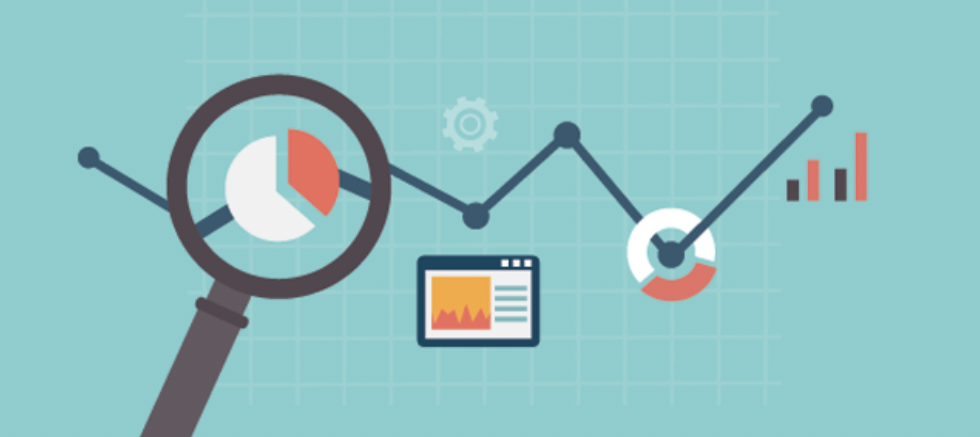
05 Oct 62 Marketing Effectiveness Terms in Honor of Aaron Judge’s 62 Homers
Yankees star Aaron Judge hit his 62nd home run of the 2022 MLB season last night, setting the single-season record for the American League and surpassing former Yankees player Roger Maris’ record of 61. Prior to the Yankees game against the Rangers, where Judge achieved this incredible feat, The New York Times estimated that he had a 47% chance of achieving this.

Tony Gutierrez / AP
As a baseball fan (go Braves!) and an expert in marketing analytics, this achievement prompted me to hunt for terms related to marketing effectiveness. Below are the 62 terms I came up with:
1. Marketing ROI
“Marketing ROI,” or the Return on investment, is generated for a particular marketing investment and expressed as a percentage.
2. ROMI
“ROMI” is defined as the Return on Marketing Investment. It is calculated by the dollars in sales per dollar of marketing investment.
3. mROMI
“mROMI,” or the margin-based Return on Marketing Investment, is calculated by the dollars in profit per dollar of marketing investment.
4. Aided versus Unaided Awareness
What is the difference between aided and unaided awareness? Awareness is typically gathered through primary research while unaided awareness asks the respondent to name the brands in the categories of which they are aware. Aided awareness asks the respondent what brands they are aware of.
5. Last Touch Attribution
Last Touch Attribution is the last action measured prior to a click to a website or some other action.
6. First Touch Attribution
First Touch Attribution is the first action in a sequence measured prior to a click on a website or some other action.
7. 4P3C1E1S Data Framework
4P3C1E1ES Data Framework is a data collection broken out by the 4Ps (Product, Price, Place, Promotion), the 3Cs (Consumer, Competitor, Channel), 1E (External Factors), 1S (Success Factors.)
8. Net Present Value
Net Present Value is the value of an investment measured over the years of impact where each year is discounted at some discount rate.
9. Correlation is not Causation
Many things are correlated; however, it doesn’t mean that one causes the other.
10. Time Series Regression Analysis
Regression takes the weekly or monthly marketing actions (independent variables) and regresses them against weekly (or monthly.) This is dependent on variables such as sales or visits to a website.
11. Working versus non-working media
Working media are the media impressions inserted in the market as opposed to non-working media. These are fixed costs related to the investment independent of the number of impressions inserted into the market.
12. RCT Randomized Control Trial
“RCT” is a method used to compare the success of prior actions based on slight differences between each action.
13. Customer Lifetime Value (CLV)
“CLV” is the term used to determine the value of a customer depending on their likelihood of their being a customer for a lifetime.
14. GRPs versus impressions
Gross Rating Points, or “GRPs,”represents the percentage of the consumers reached via media action. Impressions represent the number of times consumers could potentially view a marketing insertion.
15. TRPs
Similar to “GRPs,” “Target Rating Points” represents the percentage of the audience in the consumer target
16. Visits
Visits indicate a visit to a website or other online property.
17. Bounce rate
Bounce rates are responses that are ineffective leading to a click. Either the visitor either does not spend a certain amount of time on the site, or they do not click further in the site to engage with it.
18. Engagement
Engagement is the level of time and clicks a consumer spends on a website or social media property
19. Likes, comments, shares
Likes, comments and shares represent the ways in which a consumer can engage with a social media property.
20. Thinking fast and slow
Thinking fast and slow: this is a concept developed by Daniel Kahneman. It indicates and displays how consumers make a considered purchase. Do they think much about their decision and purchase make a difference?
21. Habitual purchase
Consumers repeatedly purchase some products without thinking. This is comparable to Daniel Kahneman’s “Thinking fast and slow” theory.
22. Consumer purchase behavior
Consumer purchase behavior describes how consumers make purchase decisions.
23. Consumer media consumption behavior
Consumer media consumption behavior determines how consumers consume media (and entertainment.)
24. Consumer media response behavior
Consumer media response behavior describes how consumers respond to advertising via different media channels.
25. Purchase intent
Purchase intent represents the level of purchase intent across a consumer segment in regards to a particular product or brand within a certain timeframe.
26. Brand relevance
Brand relevance represents the level of relevance a brand has compared to other brands for a consumer in a consumer segment.
27. Brand equity
Brand equity represents the level of utility a consumer (and distribution channel) has for a brand compared to others in the category.
28. Brand loyalty
Brand loyalty represents the perception of a brand to continue to purchase it regardless of competitive brand equity and price combinations.
29. Google analytics
Google analytics (and other search engines) provide web visitor behavior patterns to use and optimize web visitor behavior for ultimate brand awareness.
30. Facebook insights
Facebook insights provides statistics on how social media visitors respond to Facebook social media posts.
31. Linear vs Connected TV
Linear TV is simple broadcast television whereas connected TV represents SmartTVs connected to the Internet.
32. Geo-location services
Geo-location services determine the use of mobile geo-tracking advertisers can determine when a mobile phone crosses a defined threshold.
33. Leading indicators
Leading Indicators are measurements and statistics that can reliably provide insight into the future.
34. Adstock
Adstock is a data transformation of marketing activities. They represent how consumers respond over time to advertisements.
35. Lag
Lags are used to transform marketing data into more accurately align the timing of the media with how consumers respond to that media.
36. Shopping cart abandonment rate
Shopping cart abandonment represents the level of shopping carts abandoned during the check-out process in e-commerce.
37. A/B Testing and Experimental Design
A/B testing and Experimental Design are methods that marketers can use to determine the effectiveness of different marketing activities. A test group typically receives the marketing action, whereas a control group does not receive the marketing activity. The difference in response between the two groups represent the relative response rate of the test marketing activity. Generally, the test takes place simultaneously.
38. Pre-post testing
Similar to A/B testing, Pre-post testing compares the response prior to a marketing activity versus following the activity.
39. Baseline
Baseline is defined as the level of sales with no marketing activities present.
40. External Factors
External factors are those that may impact the overall demand in the category, such as interest rates, unemployment rates and many other macro-economic factors.
41. Seasonality
Seasonality is an external factor where demand is different at various times in the year. For example, the level of demand in the summer versus the winter for a product like a sun-screen or bathing suit.
42. Behavioral targeting
By tracking online behavior, marketers can target groups of individuals based on common behaviors.
43. Conversion rate
Conversion rate represents the number of sales on a website versus the number of visitors to a website.
44. Cost per action
Cost per action represents the marketing investment made per consumer action.
45. Cost per click
Cost per click represents the marketing investment per click to a website.
46. Click thru rate
Click thru rate represents the number of clicks received with an online marketing investment.
47. Consumer segmentation
Consumer segmentation represents groups of consumers based on similar characteristics, such as demographics.
48. Churn rate
Churn rate represents the number of consumers lost that were up for renewal.
49. Data visualization
Data visualization is the process of transforming raw data tables into graphs and charts that are more easily understandable to those less familiar with data.
50. Day part
Day parts represent times during the day during which advertising may be more effective in reaching a particular audience.
51. Landing pages versus exit pages
Landing pages are designed for entry to a website during which a consumer clicks on a specific online advertisement. Conversely, exit pages are the last web pages visited prior to the consumer leaving the website.
52. Marketing Mix
Marketing mix is described as the combination of marketing channels invested to reach a particular consumer segment or audience.
53. Net Promoter Score
Net Promoter Score is a measurement of consumer satisfaction levels for a company providing services.
54. Qualified Lead
A qualified lead is a consumer that has responded in some sort of fashion. It is an individual that meets critical criteria to be worth following up with.
55. Retargeting
Retargeting is a method used to advertise to those consumers that visited a website. It is a method used to encourage them to return to the webpage.
56. Reach
Reach represents the number of consumers reached with a particular media channel investment.
57. Personally Identifiable Information (PII)
PII, or “Personally Identifiable Information” is information that can be collected by an advertiser that could potentially identify a specific consumer.
58. Targeting
Marketers specify the consumers that are more likely to respond to a particular marketing activity. This is defined as “targeting” in the world of marketing.
59. Look-alike modeling
Look-alike modeling uses a sample of customers to find another group of prospects that share similar characteristics as the original sample to improve targeting.
60. Switching cost
“Switching cost” is the investments a consumer needs to make in order to switch to a competitive brand.
61. Propensity modeling
Based on a consumer’s prior history and demographics, propensity modeling determines the likelihood that a consumer will take a particular action.
62. Marketing dashboard
A visualization of marketing actions and their results to build an overview of marketing success.

Did I Miss Anything?
Similar to baseball statistics (or any sports statistics,) brand awareness, marketing strategy, and ROMI can be predicted via marketing analytics. Do you have any marketing effectiveness terms you would like to add to this list? Are you looking to expand your brand awareness and determine which marketing strategies would best serve your business?




No Comments